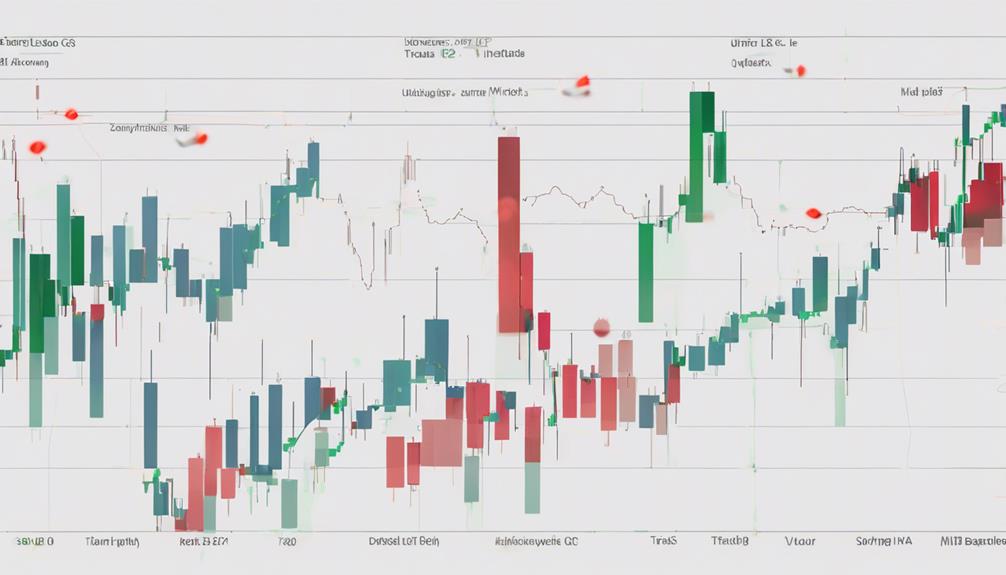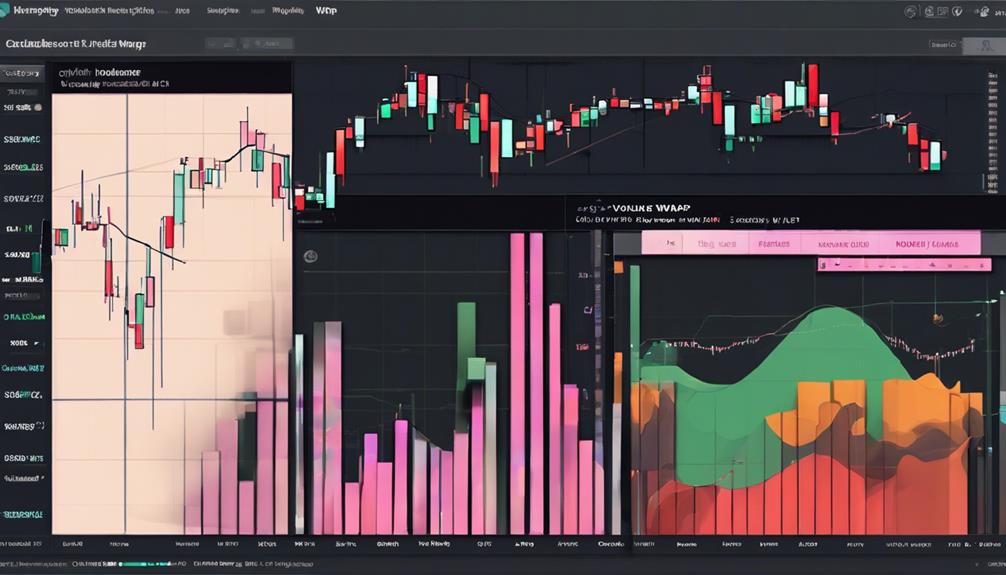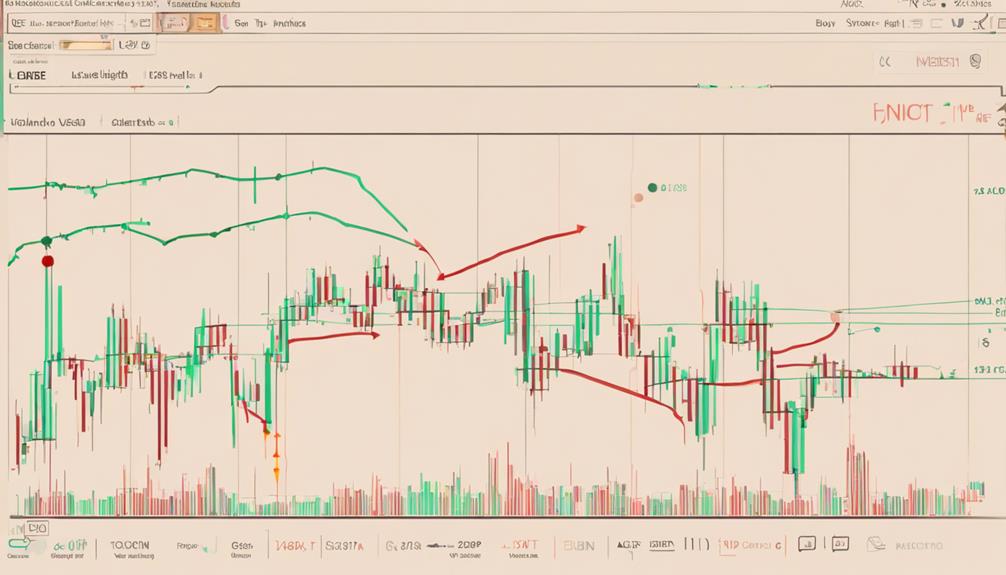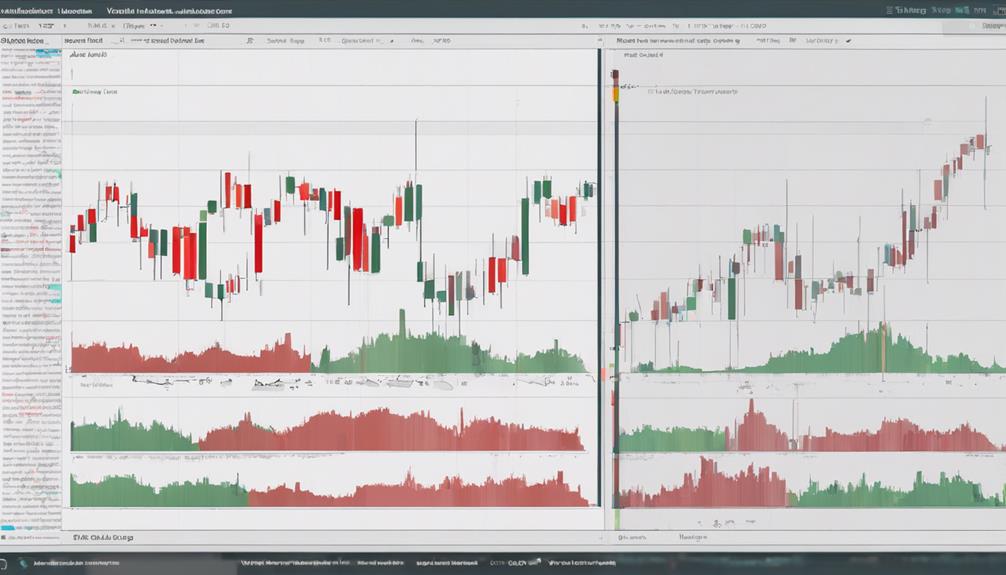Think you've mastered trading solely on price action? Think again. Before you brush off volume indicators as just another fancy addition to your charts, consider this: volume can be the missing piece to your trading puzzle, revealing insights that pure price analysis may overlook.
As you navigate through this guide, you'll uncover the hidden power behind volume-based indicators and how they can revolutionize your trading strategies.
Overview of Volume-Based Indicators
When delving into the realm of volume-based trading indicators, understanding the overview of these tools is crucial for gaining valuable insights into market dynamics. Volume-based indicators like On-Balance Volume (OBV) and Chaikin Money Flow analyze trading volume to provide traders with essential information for decision-making.
These indicators help in confirming price movements by assessing the relationship between volume and price changes. By utilizing technical analysis through volume-based indicators, traders can better gauge buying and selling pressure in the market.
OBV and Chaikin Money Flow assist traders in identifying trends, potential reversals, and overall market sentiment. Incorporating these indicators into your trading strategy can enhance your decision-making process and provide a deeper understanding of market dynamics.
Importance of Volume in Trading

Understanding the significance of volume in trading is pivotal for interpreting market activity and making informed decisions based on liquidity levels and price movements. High trading volumes indicate strong interest and potential price movements. Volume acts as a leading indicator, preceding price movements and validating trends.
By using volume indicators, traders can spot divergences, enhance trading strategies, and anticipate market shifts. Analyzing volume not only helps in understanding the strength of a price movement but also provides insights into the conviction behind the market participants' actions.
Incorporating volume analysis into your trading approach can significantly improve your ability to make well-informed decisions and adapt to changing market conditions effectively.
Types of Volume Indicators

Exploring various types of volume indicators offers traders valuable insights into market dynamics and potential price movements.
On-Balance Volume (OBV) predicts price changes by analyzing volume data, while Chaikin Money Flow (CMF) tracks money flow within a specific timeframe.
Klinger Oscillator focuses on short-term money flow trends by evaluating force volume, and the Accumulation Distribution Line decodes levels of buying and selling pressure.
Additionally, Volume Weighted Average Price (VWAP) reveals the average price traded over a set period, aiding in understanding support and resistance levels.
These trading indicators play a crucial role in volume analysis, providing traders with essential information on money flow dynamics and the balance between buying and selling pressure in the market.
Interpreting Volume Indicator Signals

To grasp the significance of volume indicator signals, analyze how trading activity influences market dynamics and price movements. When interpreting signals from volume indicators such as On-Balance Volume (OBV), Chaikin Money Flow (CMF), and Klinger Oscillator, consider the following:
- Look for high trading volumes to indicate increased market interest and potential momentum.
- Analyze money flow trends using indicators like OBV and CMF to predict price changes.
- Utilize force volume analysis with tools like the Klinger Oscillator to understand short-term money flow dynamics.
Understanding these aspects will help you make informed decisions based on the insights provided by volume indicators.
Best Practices for Using Volume Indicators

Enhance your trading strategies by implementing proven best practices for utilizing volume indicators effectively.
Volume indicators play a crucial role in understanding market sentiment and predicting price changes. By analyzing trading volume, one can identify optimal entry and exit points, gauge buying/selling pressure, and improve decision-making in technical analysis.
Incorporating indicators like VWAP and Accumulation/Distribution enhances the accuracy of day trading strategies by confirming trends and predicting market shifts. Utilizing volume indicators not only helps in confirming price movements but also aids in predicting potential market reversals.
What Are the Best Volume-Based Trading Indicators to Use for Successful Trading?
When it comes to successful trading, using the right key volumebased trading indicators can make all the difference. Some of the best volume-based indicators to consider are on-balance volume (OBV), volume-weighted average price (VWAP), and accumulation/distribution. These indicators can provide valuable insights into market trends and potential price movements.
Frequently Asked Questions
What Is the Best Indicator Based on Volume?
For the best indicator based on volume, consider your trading strategy and market conditions. Combine popular options like OBV, CMF, and Klinger Oscillator for a comprehensive view. Test and choose based on your preferences and goals.
How Do You Use Volume as a Trading Indicator?
To use volume as a trading indicator, monitor spikes in trading activity to confirm price trends. High volume on upward moves signals strength, while increased volume on downward shifts may indicate weakness. Volume analysis guides strategic decision-making.
What Is the Difference Between OBV and Mfi?
In volume-based trading indicators, OBV measures volume flow while MFI assesses money flow strength. OBV accumulates volume on up days, MFI oscillates between 0 and 100 with overbought at 80 and oversold at 20. OBV confirms trends, MFI indicates reversals.
What Is the Formula for the Volume Indicator?
To calculate the volume indicator, simply sum up the shares or contracts traded in a specified period. This provides a clear way to gauge market activity and interest levels, aiding in understanding buying and selling pressures.
Conclusion
In conclusion, volume-based trading indicators are crucial tools for analyzing market dynamics and making informed trading decisions.
Despite potential skepticism towards the complexity of volume indicators, imagine the clarity and precision they can bring to your trading strategy.
By incorporating volume analysis into your trading routine, you can gain a deeper understanding of market trends, identify potential reversals, and ultimately improve your overall trading performance.
Don't underestimate the power of volume indicators in shaping your trading success.
